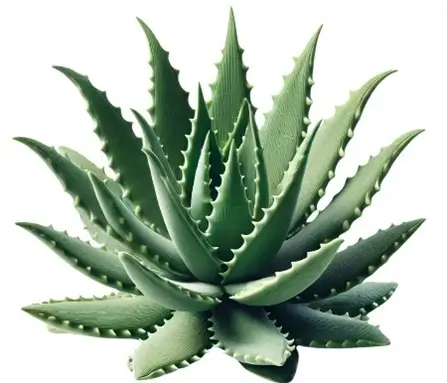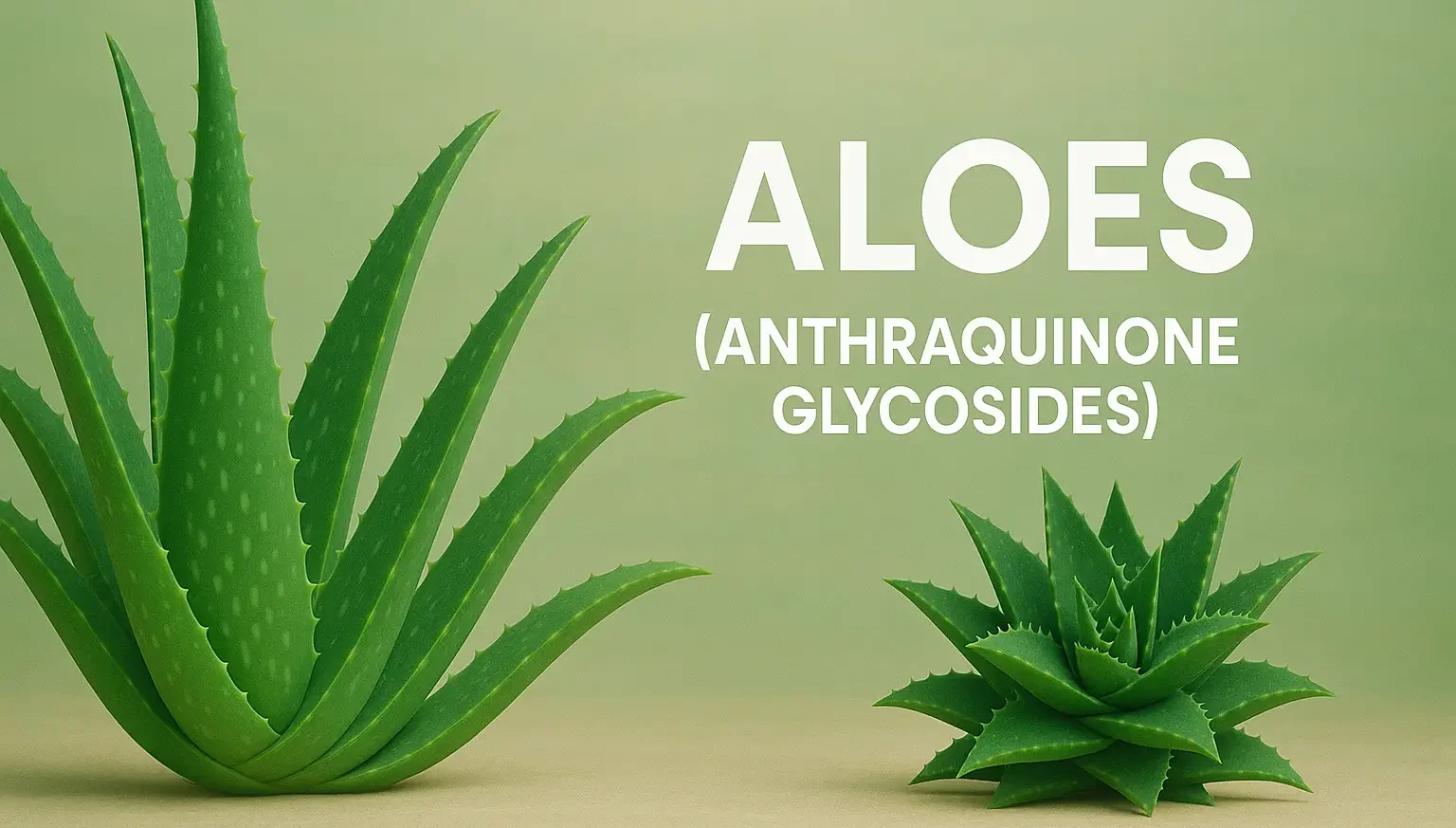General Introduction to Aloes (Anthraquinone Glycosides):
Aloes are rich in anthraquinone glycosides and are used as laxatives and wound-healing agents. Aloe gel is widely used in cosmetics and skin care products.

Synonyms of Aloes (Anthraquinone Glycoside):
- Common name: Aloe
- Scientific name: Aloe barbadensis, Aloe ferox
- Synonyms: Ghritkumari (Hindi), Cape Aloe, Curacao Aloe
Biological Source:
- Derived from the dried juice of leaves of Aloe barbadensis or Aloe ferox.
Advertisements
Family:
- Asphodelaceae
Composition:
- Major glycosides:
- Aloin A and B (Barbaloin): Main anthraquinone glycosides.
- Other anthraquinones: Aloe-emodin, Chrysophanol.
- Aloe vera gel: Contains polysaccharides, vitamins, and enzymes.
Chemistry & Chemical Classes:
- Chemical Class: Anthraquinone glycosides.
- Structure:
- Aloin is a C-glycoside of anthraquinone, which releases aloe-emodin upon hydrolysis.
Therapeutic Uses of Aloes (Anthraquinone Glycoside):
- Laxative: Treats constipation.
- Wound-healing: Aloe gel promotes skin healing and hydration.
- Anti-inflammatory: Aloe reduces inflammation in wounds and burns.
Commercial Applications:
- Widely used in laxative formulations.
- Aloe vera gel is used in cosmetics, skin creams, and sunscreens.
Advertisements

